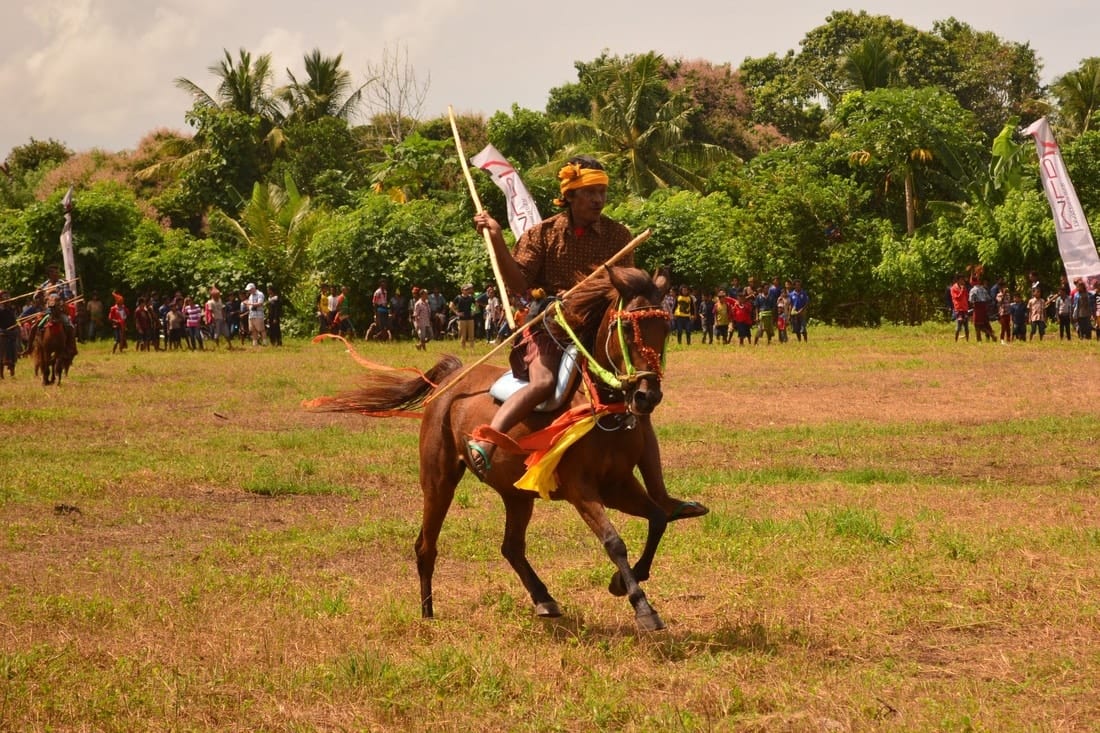Last Updated on 21 May 2024 by Cycloscope
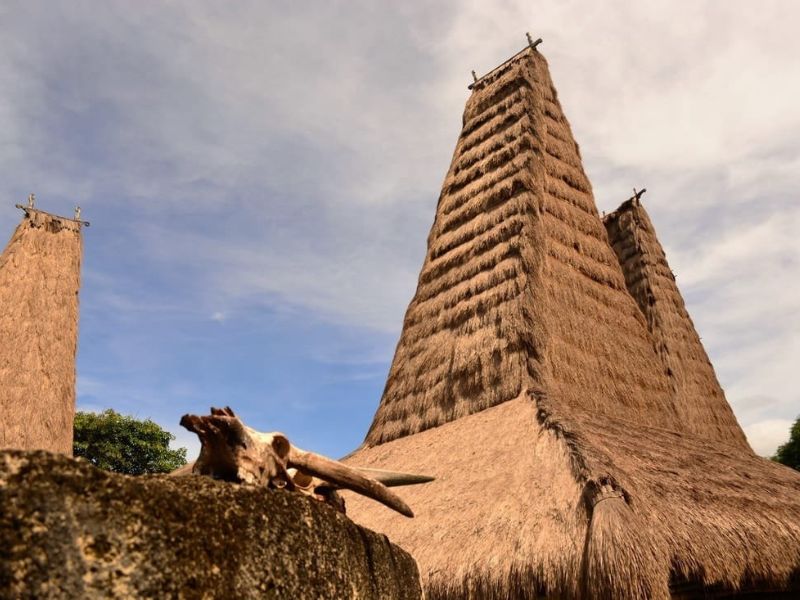
In the ancestral village of Ratenggaro, set in the wild landscape of the East Sumba, everything is ready for the Pasola. People gather here from all over the province of Kodi and beyond.
Our bikes catch the eye of many, the tense faces, awaiting the sacred event. Someone could die and become a hero, his tomb carved in monolithic stone.
Someone else might die, but in infamy, his body was torn to pieces for not respecting the rules of the Pasola. But what is a Pasola? To try to understand it we must start from afar, from the ancient Marapu religion.
Sumba island. But first, a few words about the island.
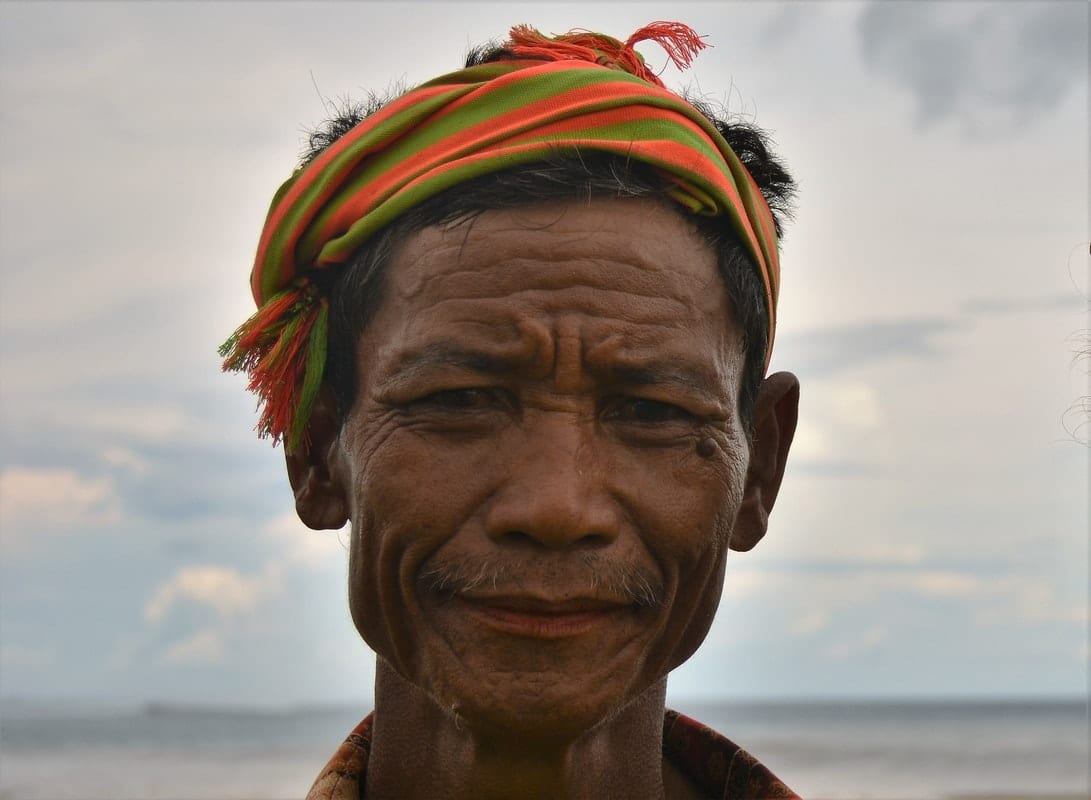
Sumba Island, the Archipelago of East Nusa Tenggara, has 650,000 inhabitants, is one of the poorest Indonesian islands, and is living from agriculture and livestock. More than half the population has no access to drinking water, and malaria and dengue are widespread.
The doctors are scarce and those that there are expensive. The island was colonized in the sixteenth century, but neither the Portuguese nor the Dutch made it a real colony. The island offered sandalwood and a little more, not very profitable compared to spices from nearby islands. This lack of interest has favored the maintenance of original culture and religion.
The people of Sumba – Forced religious syncretism, Marapu, and Christianity

There are six religions recognized by the Indonesian government: Christianity, Islam, Catholicism, Buddhism, Hinduism, and Confucianism. But religions practiced in Indonesia are dozens, Marapu is one of them, practiced by most of the inhabitants of Sumba.
One can not belong to no religion in Indonesia, it is compulsory to write black on white on the identity card. So Marapu is forced to write “Christian” or “Muslim” or at least a religion that recognizes one and only god (to be recognized Balinese Hinduism had to raise a God above the other).
Here many have chosen the Christian religion, at least for official documents. They do not like the government or Muslims, and many schools and health services on the island are run by Christian Churches. It is often asked to be baptized in order to continue the studies.
In particular, there is a growing influence of the evangelical church, reflected in the mass conversion ceremony, although many islanders keep their beliefs practiced in secret. The elders believe the conversions break the relationship with the ancestors and live it in a traumatic way.
Moreover, the Church has managed to sell better their “membership”, mixing it with the local traditions, for example, it is not uncommon to see a traditional funeral complete with a megalithic tomb celebrated by a Catholic priest. What matters, as unfounded, is numbers.
Introduction to Marapu religion

The Marapu believes that earthly life is temporary, you can’t fault that, and that eternal life is in the world of the spirits. Here the eternal spirits live a life similar to that of humans.
The Marapu teaches balance of universal life, this balance is symbolized by the Great Mother (In Kalada) and the Great Father (Ama Kalada) who take the shape of the moon and the sun, which together have given birth to the ancestors of the people of Sumba.
To honor these spirits, the Sumbanese creates icons, and statues on stone altars where offerings are deposited in the forms of Sirih Pinang (a dish containing betel leaves, nuts, and lime) and sacrificial cattle.
The last megalithic culture
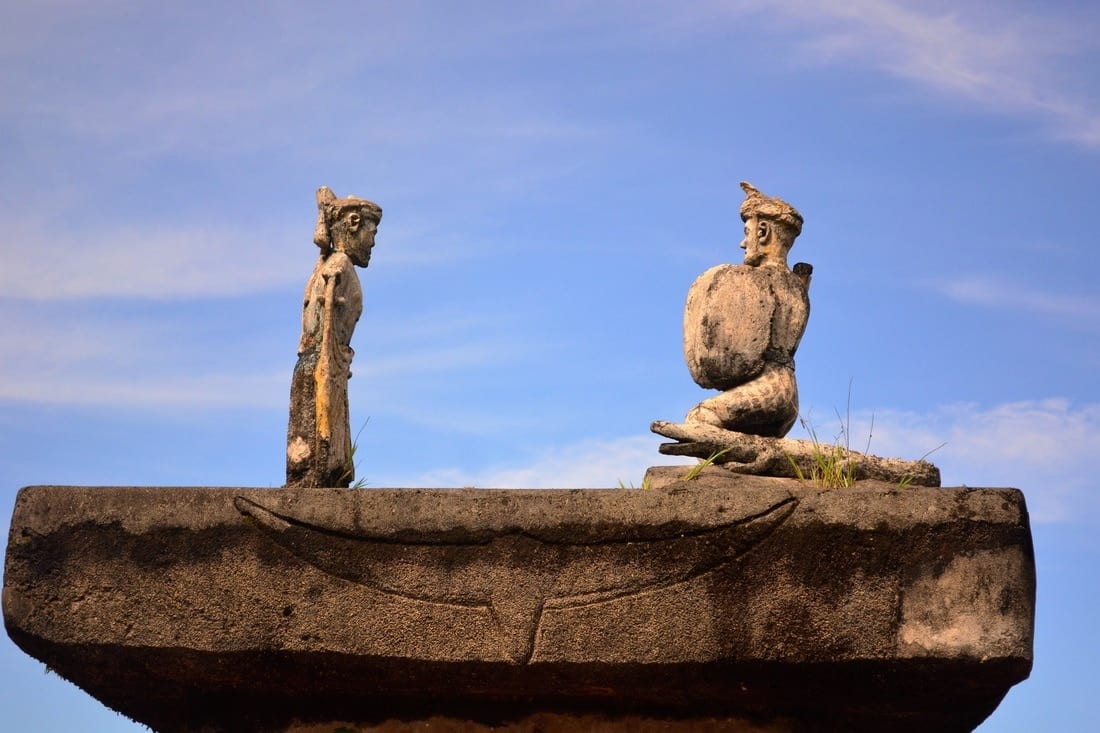
The importance of the ancestors is expressed through the tombs and vestiges of one of the last megalithic cultures that survived on the planet.
In many cases, families light up debts that extend to future generations to be able to build these tombstones in the traditional way. The funeral and burial can be delayed for decades until the family doesn’t get enough money, and in the meantime, the bodies of the dead are kept in the houses of the living.
Hundreds of people take part in the Tarik Batu ceremony. Huge stone slabs, up to 70 tons, are transported by hand, to the place of burial, adjacent to the village. A large number of buffaloes, cows, pigs, and occasionally horses are sacrificed.
All rituals have to be made correctly, the islanders believe, in fact, that seven pairs of men and women descended from the sky on a staircase made of buffalo horns, coming from the north-central part of the island. So that then they too, performing all the necessary burial rites, will be able to climb that ladder and be reunited with their loved ones.
The Pasola
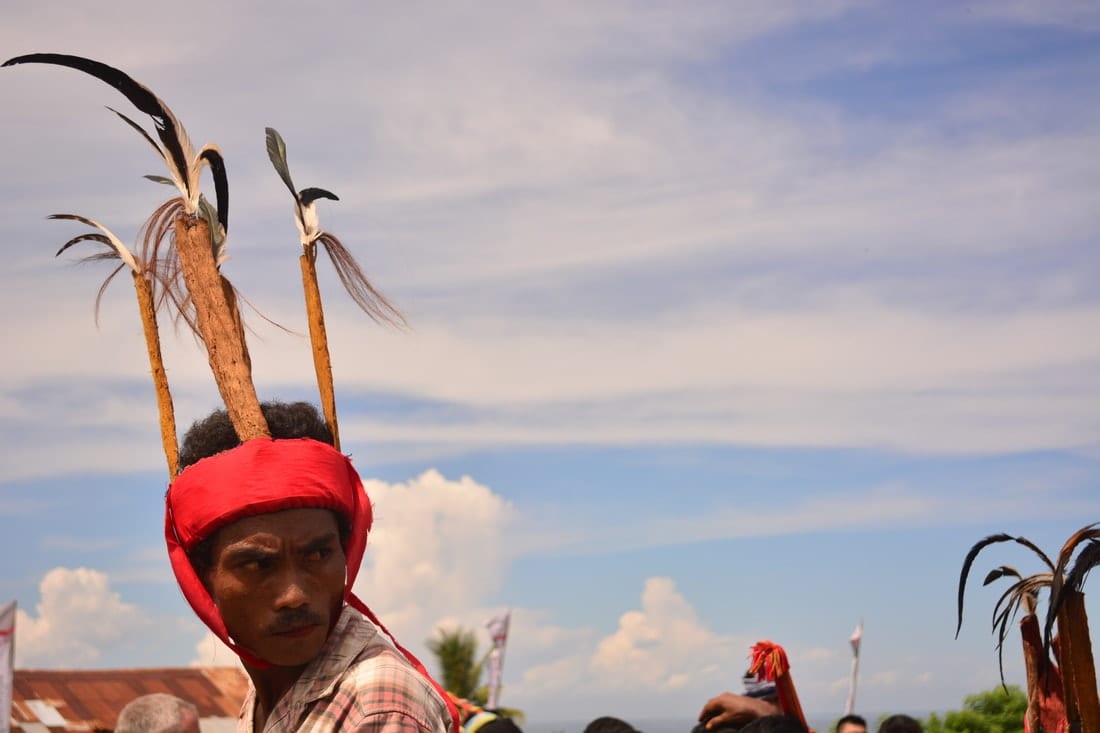
This is a Pasola and is not a game. A sacred ritual where the blood must flow, metaphysically fertilizing the earth for a season without famine.
Along with the funeral, the Pasola is certainly the most important ritual. It is, to simplify, a ritual battle to celebrate the season of rice planting, or rather a fertility rite.
Two different groups of men from different clans or tribes, on a horseback, throw each other barbed wooden spears. The aim is to shed blood in order to fertilize the soil. The Pasola is also a way to settle disputes between villagers and families.
In the Wanukaka region, where we are, as part of the ritual, the marapu priests go to the beach in the early morning, they sacrifice a black cock, and discuss some of the entrails to see if the time has come.
Then, they enter the water, looking for colorful worms in the sand. If they find them is a good sign, especially if they are big and chubby, and the Pasola season can start. Otherwise, the crop will be ruined and also the Pasola.
The Pasola season usually begins in March and extends for 2/3 weeks, during which there are many Pasola around the island, even small villages can hold more than one in the season.
Our report from the Pasola of Ratenggaro, Sumba
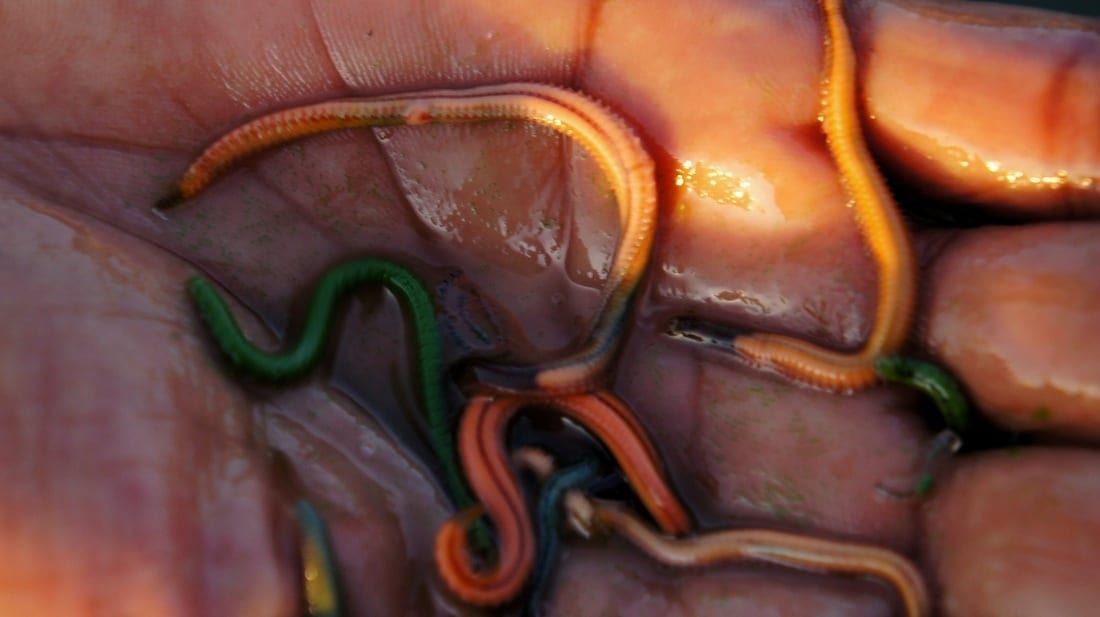
The dominant color in this part of Sumba is white. Cycling the east coast, on gravel roads of white rock invaded by small white grasshoppers and sided by pristine white sand beaches, we meet the first traditional villages.
The houses, uma mbatangu, are made of bamboo with impressive thatched roofs. There are no windows but small openings in the woven palm leave wall, which makes it much cooler than modern brick houses. buffalo skulls are often placed outside in memory of the sacrifices that the family made.
We cross glances at men and women, their teeth ruined by betel nuts. The landscape is strangely dry for an Indonesian island, even though the rainy season has just ended. The vegetation is low and there are no rivers in this area.
We reach Ratenggaro, in the southwest of the island. Immediately before the village, there is the field of the Pasola, a land clearing where there are already some men on horseback, the Sumba horses are very small but possess great strength. There is also the Pasola Police, men who should maintain order if things get out of hand.
Awaiting the start we visit the village, two hundred meters away from the sea, a wide thin sand beach broken by some rugged cliffs. We see for the first time on the island some other bule (white person), but not too many. Outside the houses, people are preparing meals, a lady is slicing a dog ready to be roasted and others cook pork.
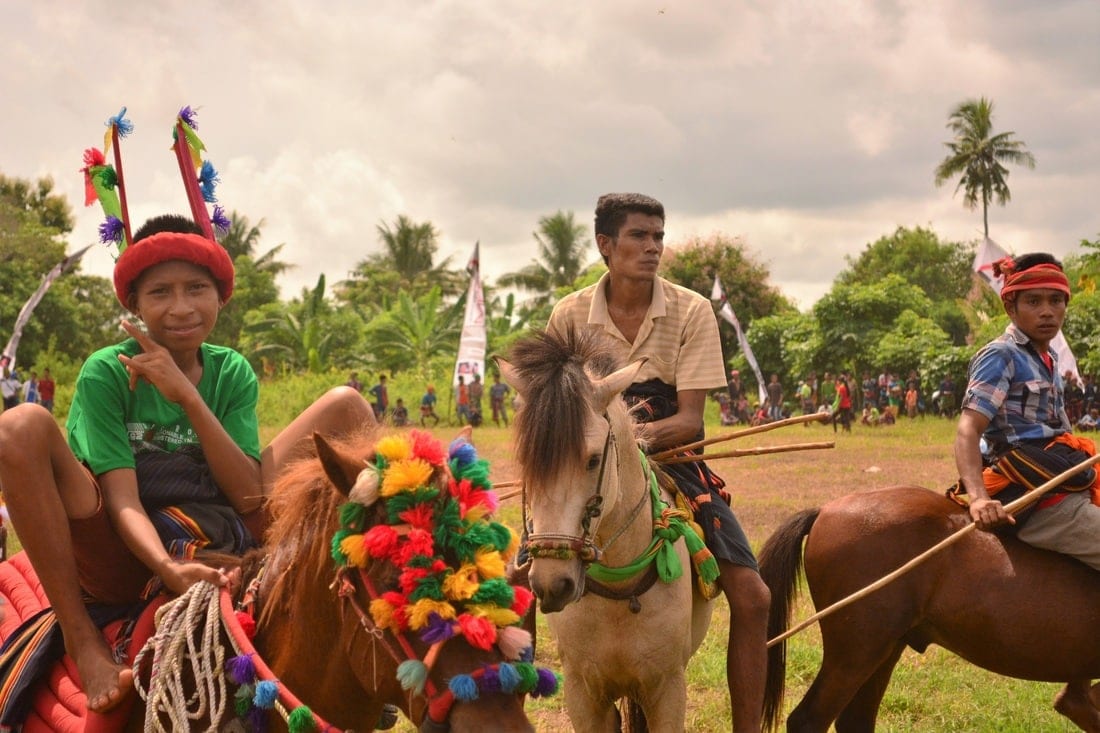
We see that this village is more accustomed to seeing tourists, but nothing seems to distract people from the ceremony that is about to begin. Only children surround our bikes.
We head to the battlefield, there are more and more horsemen. The public is very numerous, the men all have a sort of machete in their belts.
At some point it starts, everyone heads to the center of the field, talking to each other, we do not know exactly what happens, then return to their places and it begins.
They throw the spears at each other, mostly missing. At first, seems a bit boring. The government has banned the use of sharp spears but it seems that, in many cases, they keep on using those. In short, you can not even decide how to die. The audience is cheering, but we don’t understand why, it is not that easy to follow.
The horsemen keep on circling the battlefield chasing each other but not many spears are thrown. At some point, the crowd begins to throw stones, and a fight breaks in the field, some say that a javelin has been thrown from behind, something forbidden. The lances must always be thrown when the opponent is facing them.
The police enter the game and start shooting guns, first in the air and then to the ground. The shots are just a few meters from us, we take shelter behind a pickup truck. The police continue to shoot, and the crowd, the players, and the horses disperse. It’s time to go for us.
Back in town, they tell us that a Pasola always ends up with the police firing, but no one is dead so what we saw can be considered a peaceful Pasola. But we do not know what happened to the guy who threw the spear from behind, we believe it didn’t end up well. In one way or another blood must be shed.
